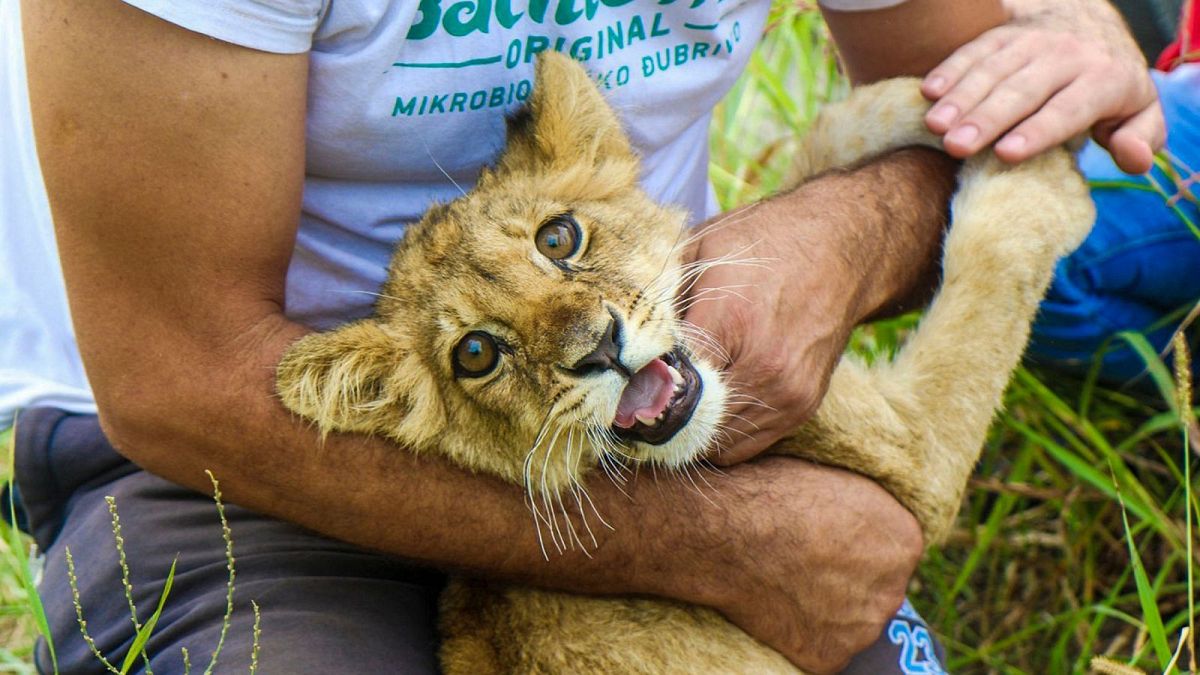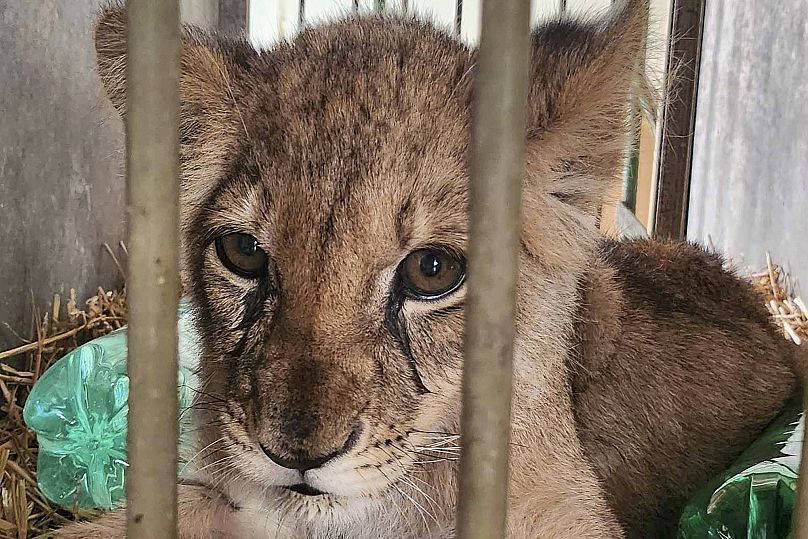The smuggling of wild and rare animals is believed to be widespread in the Balkan region.
A lion cub was taken to a zoo in northern Serbia yesterday (21 September) after it was seen wandering on a local road, officials and media said.
Only a few months old, the female cub was found on the outskirts of Subotica, a town near the border with Hungary.
She was malnourished and weak, said Sonja Mandic from the Palic Zoo, which has taken in the cub.
Local media said that a Subotica resident spotted the cub on the road and called the police, who then took it to the zoo.
What condition was the lion cub in?
A video on social media shows the cub appearing from the grass and stepping onto the road.
Reports also said that the cub was friendly and wasn't afraid of people. A policeman and local residents could be seen in other videos and photos caressing the cub.
Mandic said the lion was in “pretty poor shape” and was receiving treatment and infusion to improve its condition.
“It could be 3 to 6 months old or 5 to 6, but is malnourished and possibly underdeveloped,” said Mandic.
Is wild animal smuggling an issue in the region?
Police are yet to issue an official statement about the incident.
But the smuggling of wild and rare animals is believed to be widespread in the Balkan region.
A report on wildlife crime from WWF last year found that songbirds from the finch family, locally protected brown bears and forest turtles were among the most targeted species in Serbia.
While cases of smuggling and the illegal possession of exotic species of snakes like pythons are also common.
In 2020, an investigation using data from Oxpeckers Investigative Environmental Journalism and the Earth Journalism Network revealed that illegal wildlife trade is rife in Eastern Europe.
It highlighted "concerns among conservationists that smugglers are avoiding scrutiny by moving wildlife products through Eastern European countries with less stringent law enforcement."




